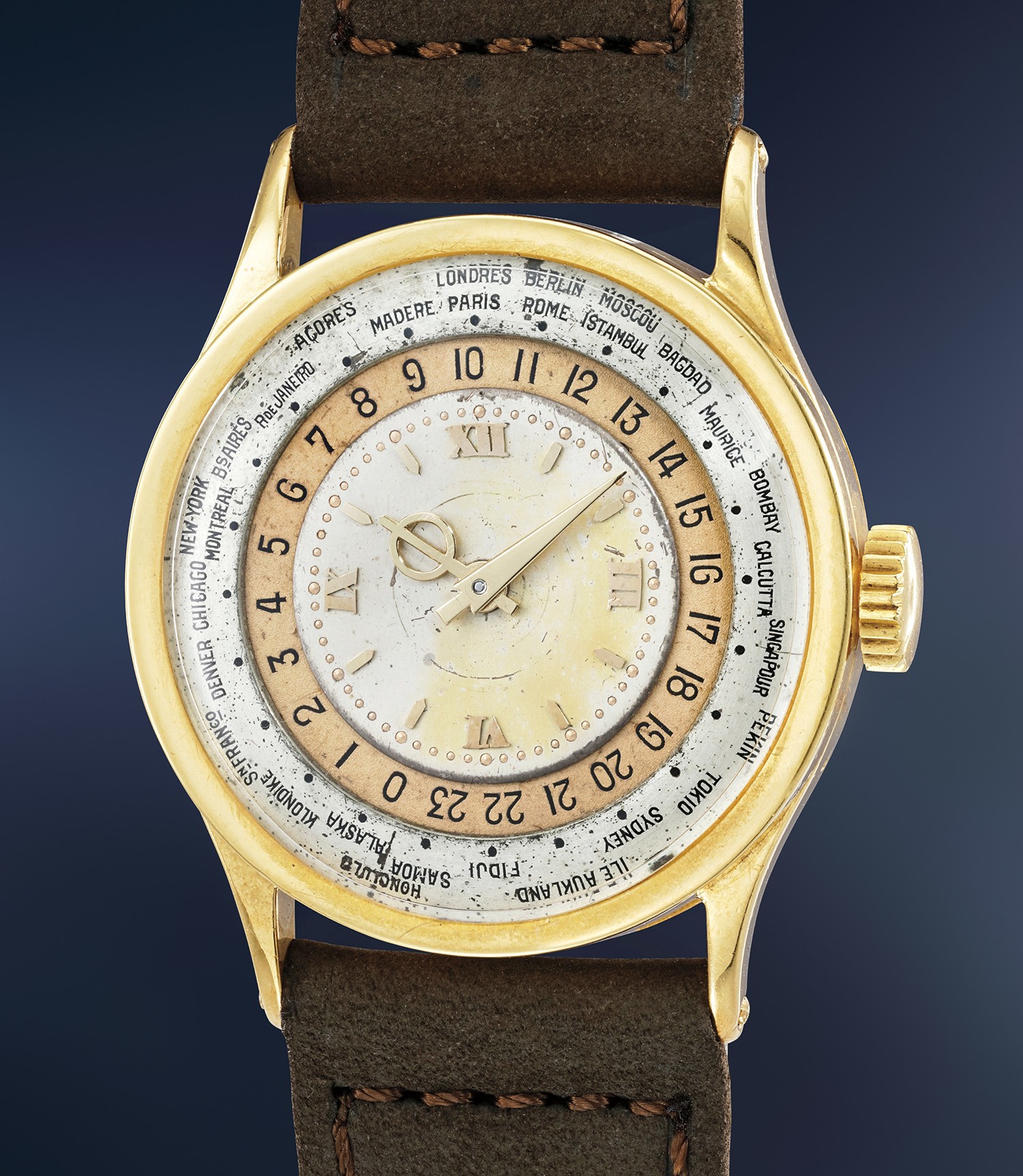
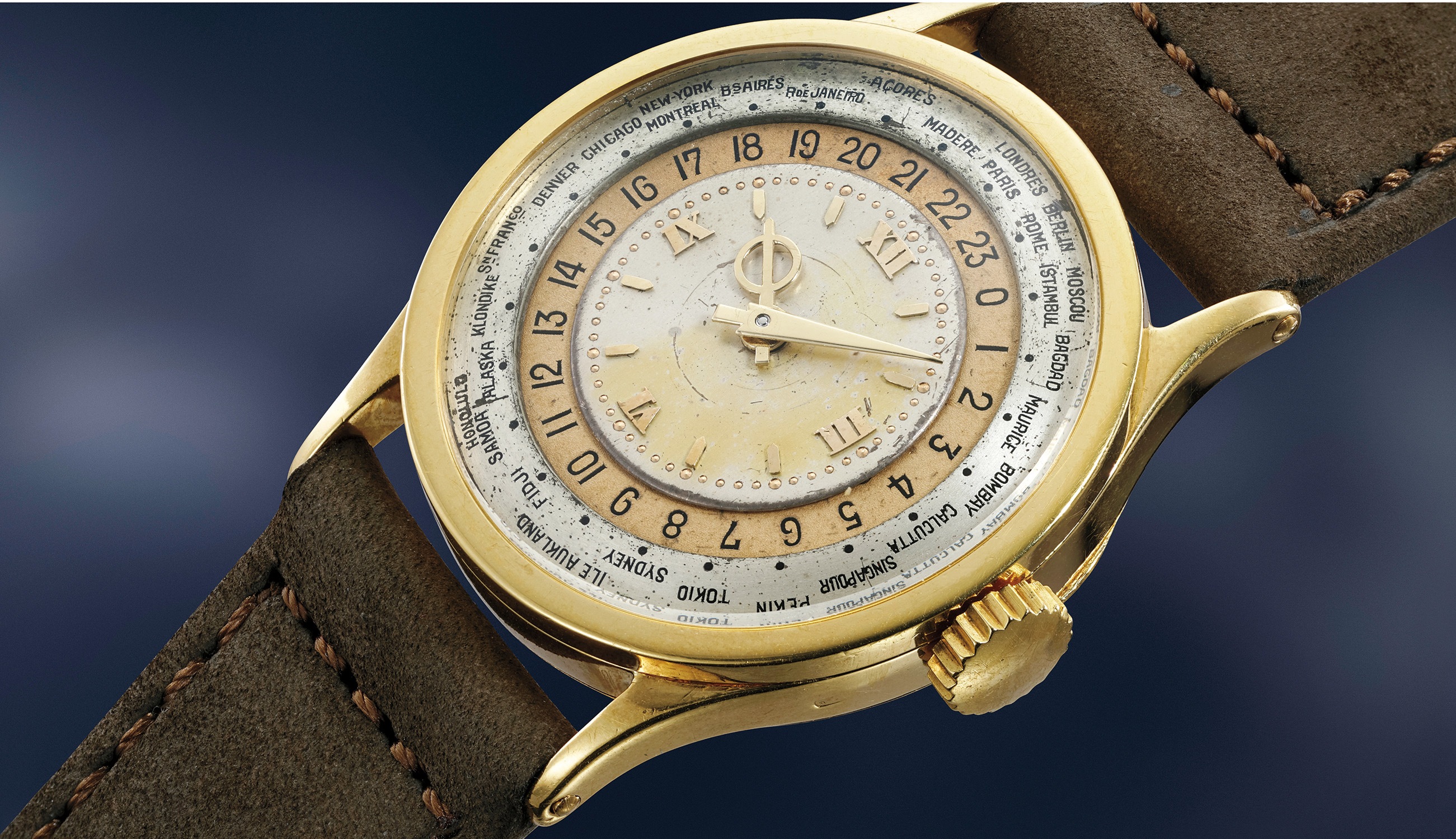
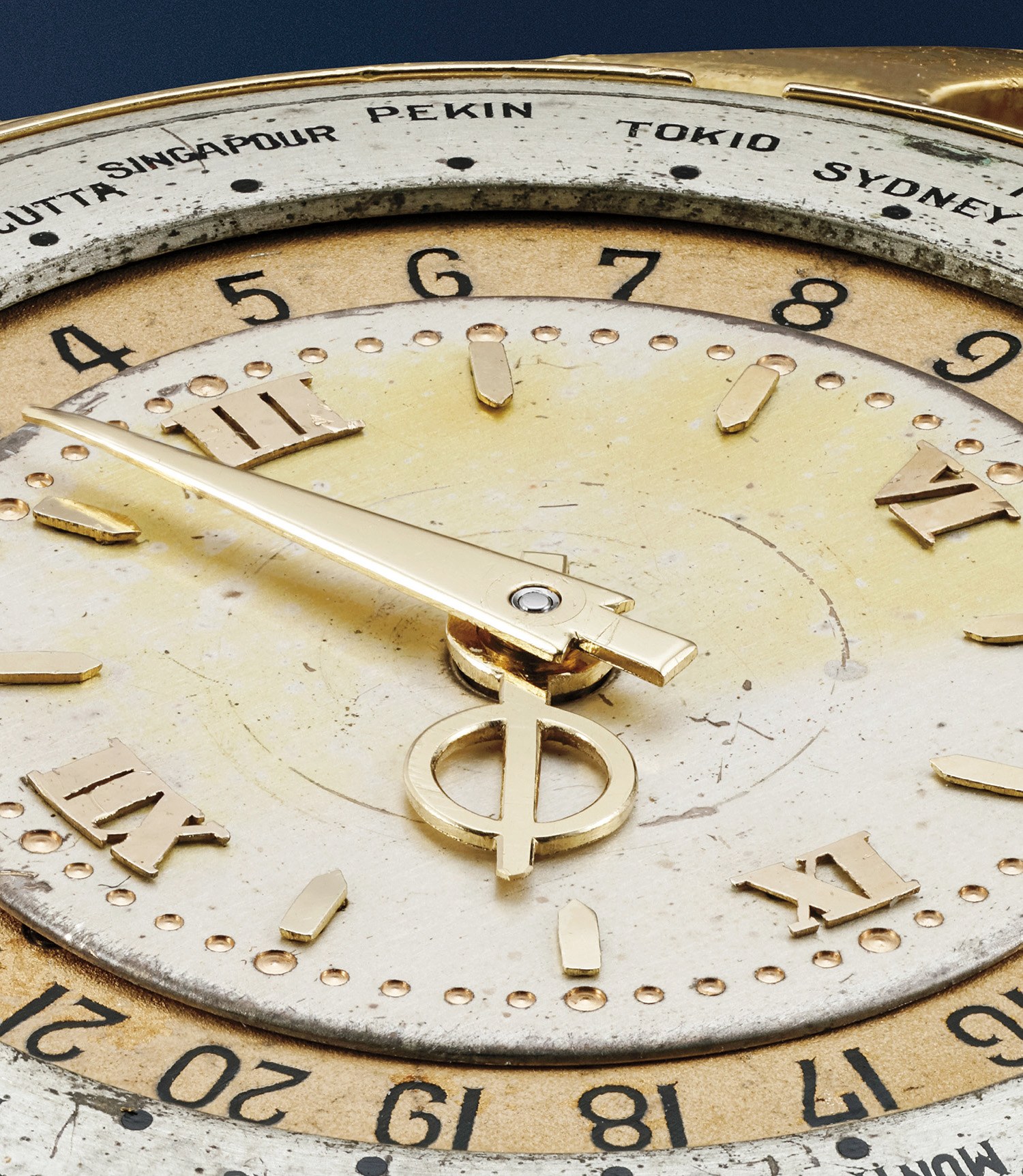
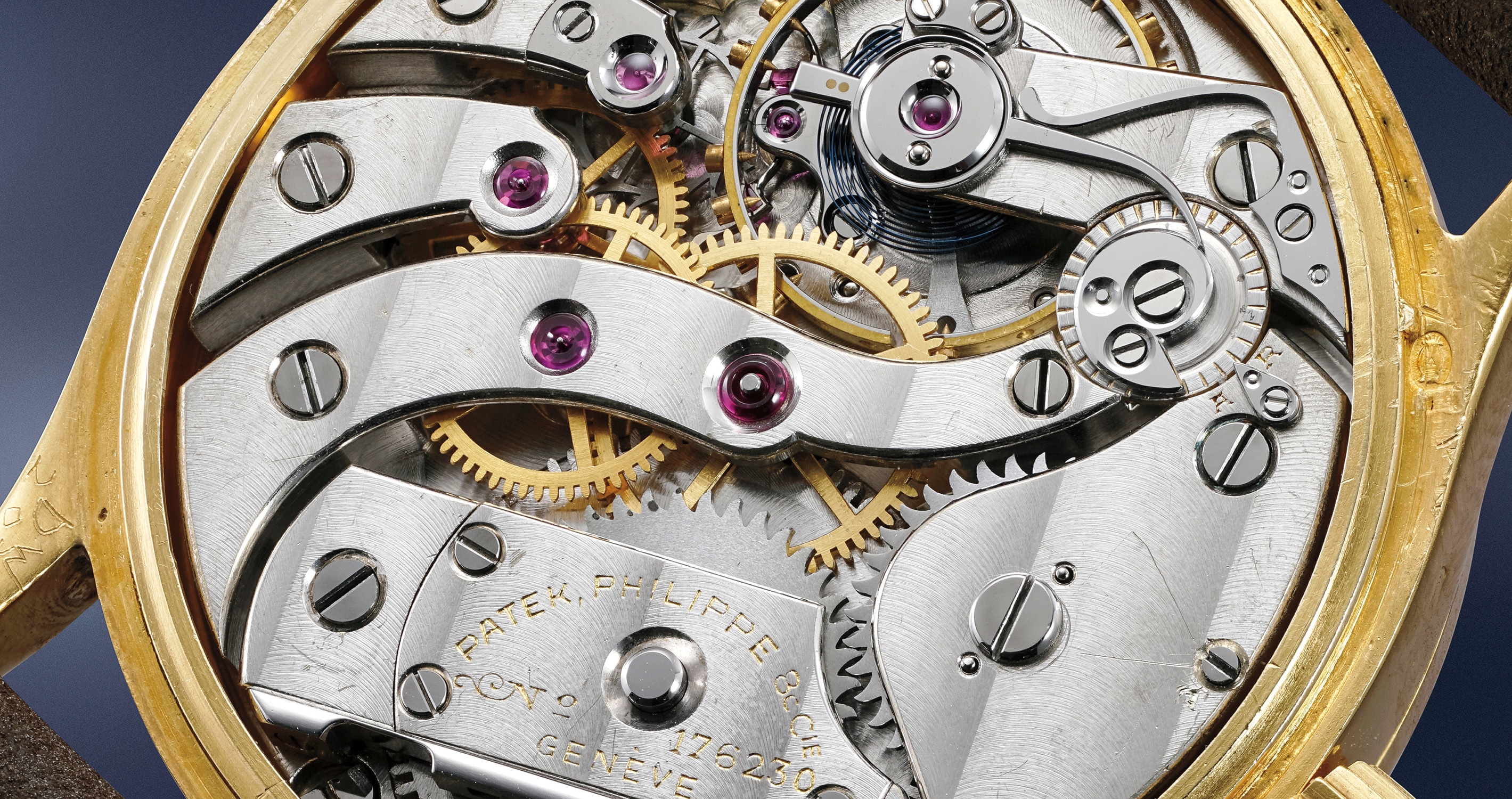

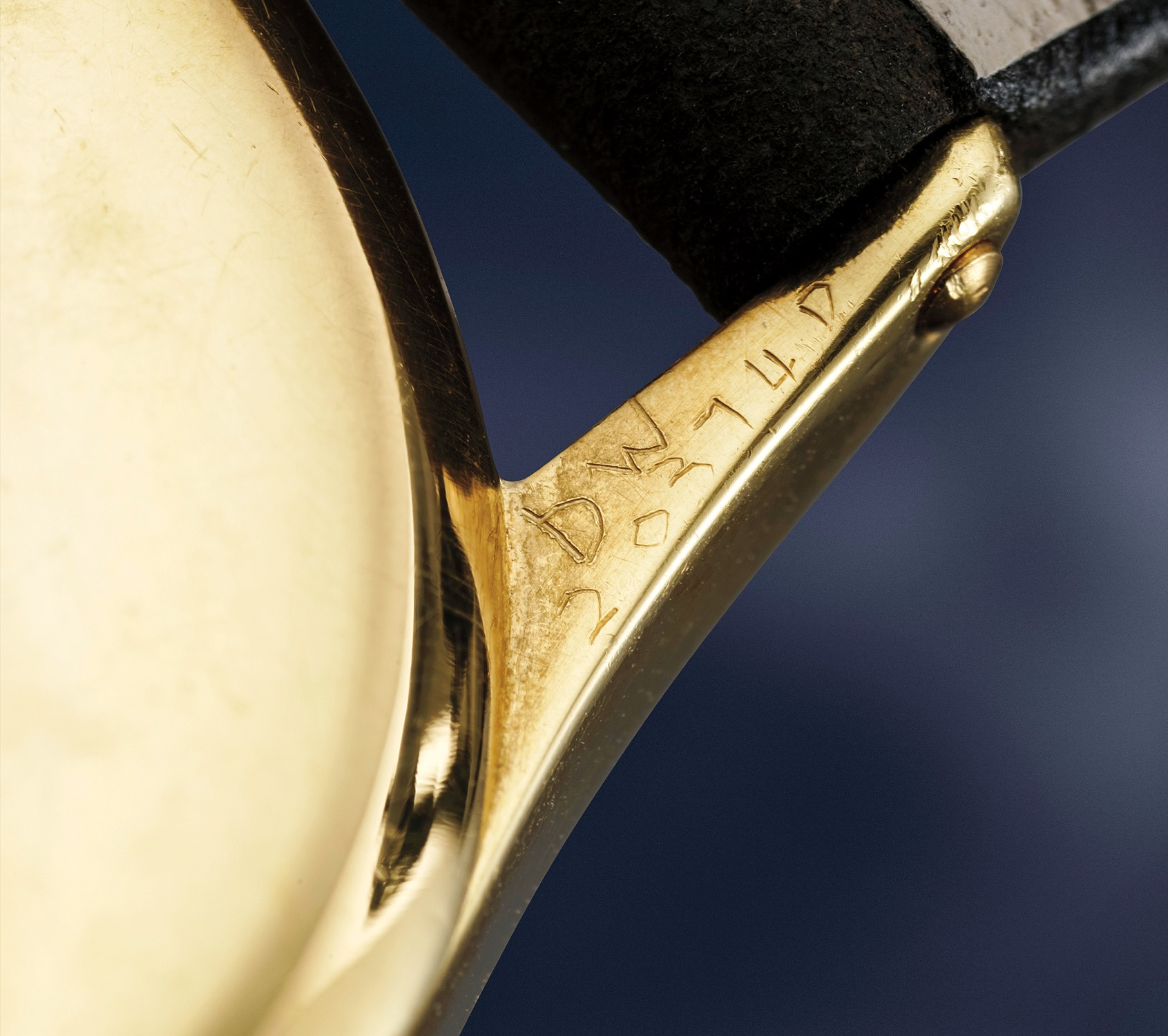
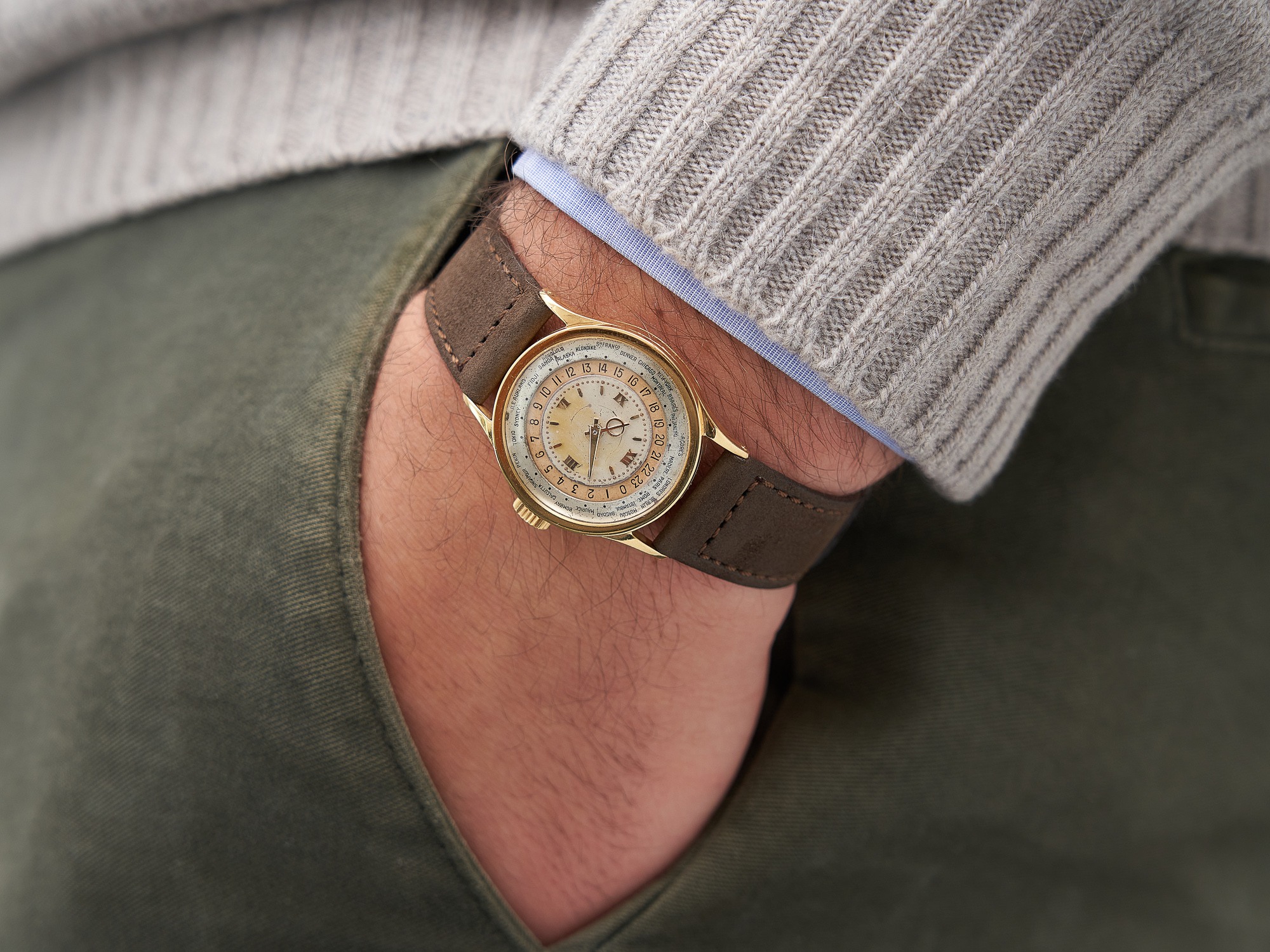







64
Patek Philippe
Ref. 96HU
Worldtime
An historically significant, highly important and extremely rare yellow gold world time wristwatch
Full-Cataloguing
Undoubtedly, Patek Philippe is one of the brands with the strongest heritage. Throughout its nearly two centuries of history, it has become virtually synonymous with Haute Horlogerie, its complicated timepieces regarded as one of the pinnacles of Swiss watchmaking. If asked, many Patek Philippe collectors would mention three lines of watches which encapsulate Patek Philippe’s savoir faire: chronograph wristwatches with perpetual calendar and moonphases, chiming timepieces and world time watches.
Patek Philippe world time pieces are today an integral and fundamental part of the company’s repertoire , available in various versions: from simple examples to those decorated with cloisonné enamel dials, passing by iterations with integrated chronograph or even a minute repeating movement. Intriguingly, it is only in the past 20 years that the complication has emerged as a flagship of the company with the rediscovery of the appeal of the vintage examples.
One can identify three “eras” in the evolution of Patek Philippe world time pieces: a modern consecration to fame, with the reintroduction of the complication in the year 2000; a “quiescence” moment in the 1950s and 1960s, when the two-crown models commercialised (2523 and 2523/1) were met with lukewarm enthusiasm by the market; and an infancy, comprising a handful of early prototypical pieces and, in the 1940s, the first serially made model (reference 1415).
The present watch is not only part of the extremely scarce pre-1415 models, but it is in fact one of the earliest iterations of the complication - possibly the oldest - ever made by Patek Philippe: a true archetype, the beginning of what is regarded today as a pillar of the current Patek Philippe collection.
The watch’s prototypical nature is apparent when one looks not only at the case - a traditional Reference 96 "Calatrava" case as opposed to the reference 1415 with tear drop lugs- but also at the movement; as stated in the Extract, it dates back to 1913 (24 years before the watch’s completion in 1937), featuring gold wheels, moustache escapement, snail cam regulator, and wolf tooth gears. The presence of such an old movement perfectly fits with the fact that the watch was not intended for mass production.
In fact, only two examples of reference 96HU are known to have been made: the present piece, unknown before 2011 when it was acquired at auction by the current owner, and a second example bearing a slightly earlier movement number (176’226) but a later case number (294’923) and currently in the Patek Philippe museum.
One could, with an educated guess, conclude that these two watches were made at the same time, most probably together with the unique rectangular-shaped reference 515 bearing movement no. 811’161 and case no. 294’862. While scholarship commonly identifies the reference 515 as the earliest Patek Philippe world time wristwatch, it is impossible to attribute with certainty such distinction to any of the three pieces.
As mentioned before, this watch belongs to a group of models made in extremely scarce numbers - possibly on-request pieces of market tests for the upcoming mass production - before the introduction of reference 1415 (produced in 115 pieces). These models are:
reference 96HU - 2 examples known, one the present watch
reference 515HU - pink gold, rectangular case, fixed city ring - 1 example known
reference 542HU - very small (27mm) model with revolving bezel - 2 in yellow gold, 1 in pink gold
reference 1416 - a sibling to reference 1415 but with bean-shaped lugs (possibly a market test) - 3 pieces made
reference 1415-1HU - world time chronograph wristwatch - pièce unique
An incredibly rare and historically important timepiece, the present reference 96HU is the only one still in private hands and offers an incredible opportunity that should not be missed.
Patek Philippe
Swiss | 1839Since its founding in 1839, this famous Geneva-based firm has been surprising its clientele with superbly crafted timepieces fitted with watchmaking's most prestigious complications. Traditional and conservative designs are found across Patek Philippe's watches made throughout their history — the utmost in understated elegance.
Well-known for the Graves Supercomplication — a highly complicated pocket watch that was the world’s most complicated watch for 50 years — this family-owned brand has earned a reputation of excellence around the world. Patek's complicated vintage watches hold the highest number of world records for results achieved at auction compared with any other brand. For collectors, key models include the reference 1518, the world's first serially produced perpetual calendar chronograph, and its successor, the reference 2499. Other famous models include perpetual calendars such as the ref. 1526, ref. 3448 and 3450, chronographs such as the reference 130, 530 and 1463, as well as reference 1436 and 1563 split seconds chronographs. Patek is also well-known for their classically styled, time-only "Calatrava" dress watches, and the "Nautilus," an iconic luxury sports watch first introduced in 1976 as the reference 3700 that is still in production today.